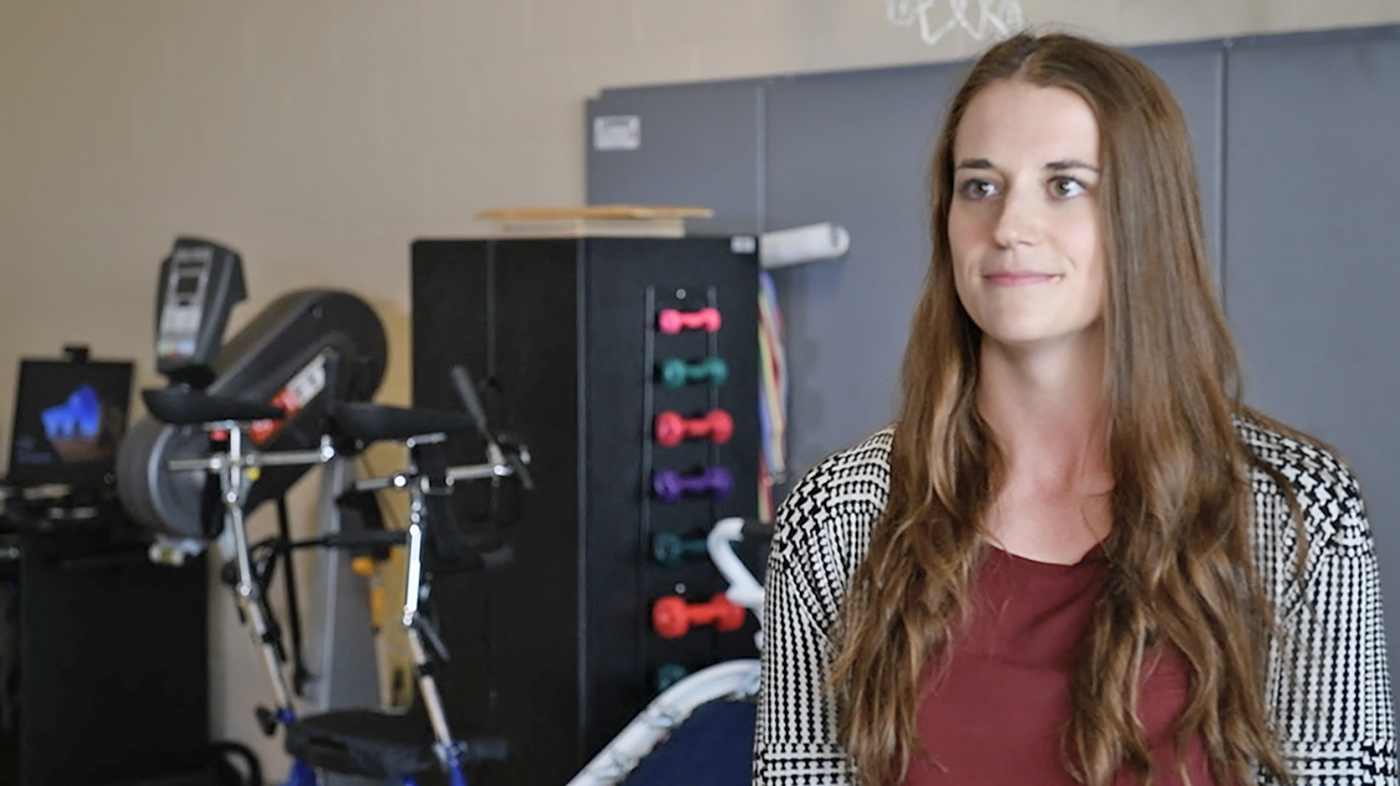Like many medical students, Dr. Kersten Schwanz had multiple areas of medical specialty she could choose for her career. Many specialties interested her, but the one thing this former college athlete knew was she wanted to do was work with athletes. Then she found the value of physiatry and rehabilitative medicine through her participation in VA’s Longitudinal Integrated Clerkship (VALUE).
The VALUE clerkship gives third year medical students a year-long opportunity to work with a group of Veteran patients learning continuity of care while completing clinical competencies across multiple disciplines such as internal medicine, surgery, neurology and primary care.
Each year, Minneapolis VA—one of a handful of VA-sponsored VALUE programs—welcomes approximately 10 VALUE clerks from the University of Minnesota Medical School. The program exposes them to various clinical areas and involves them in Veteran care, which often leads to students discovering their preferred medical specialty and a passion to serve at VA.
When Schwanz (pictured above) first came to Minneapolis VA, she had no idea what a physiatrist did. Physical Medicine and Rehabilitation (PM&R) physicians, also known as physiatrists, treat a wide variety of medical conditions affecting the brain, spinal cord, nervous and musculoskeletal systems with a focus on improving patient function and treating the whole person.
Interested in both the muscular and nervous systems
At Minneapolis VA’s spinal cord injury unit, Schwanz found her niche under the mentorship of fellow physiatrist and Olympic-class athlete Dr. Alexander Senk. “I knew I wanted to learn more about sports medicine. I have a strong athletic background, so the VALUE director connected me to Senk because he’s a sports medicine physician,” Schwanz said.
One of the first questions Senk asked was what she wanted to do as a clinician. She told him about her background in rowing and her interest in both the muscular and nervous systems because both are intricately involved in strength training.
“After a few weeks of being in his clinic, I said ‘Wow, this is a really good path for me,’” Schwanz said.
Today, Schwanz is in her third year of residency following medical school, working daily with Senk at the PM&R team. In addition to treating patients who have suffered significant injuries or conditions leading to functional losses such as spinal cord or traumatic brain injuries, Schwanz is assisting with a research study that involves an idea she had for an adaptive rowing seat when she was a VALUE clerk.
She also went to the National Veteran Wheelchair Games working alongside Senk and the National Veterans Wheelchair Games medical team and as a coach for the Veteran athletes. “I’m very grateful for getting there. The experience was profound” she said. “Caring for patients, especially those who have had devastating injuries, is heavy to carry. But I think PM&R brings some light to that. They’re able to do these new movements that they couldn’t do before and it almost adds a bit of buoyancy to that heavy situation.”
Back to Minneapolis VA for her residency
Schwanz credits the VALUE program and the opportunities it gave her to explore different areas of medicine while working closely with patients over the course of that critical third year of medical school for shaping her as a physician.
“The VALUE program allows you the freedom to explore things you never knew you liked,” said Schwanz, adding the relationships she developed with VA faculty members and mentors like Senk led her back to Minneapolis VA for her residency training.
She also credits the relationships she built with the Veterans she followed during her clerkship.
“It gave me a really cool vantage point where you’re understanding their perspective over time. Where you’re not just seeing them once or twice. You see them this month when they’re doing well. Next month when they’re not doing well and then how they rebound from that. I think that gave me a unique vantage point in PM&R and helped me find the field that I ultimately wanted to go into,” Schwanz added.
VA salutes the more than 118,000 health professions trainees who train each year in VA, VA’s clinical educators and the more than 1,400 educational institutions that partner with VA to train future health professionals. These academic affiliations, some of which began more than 75 years ago, are coordinated by VA’s Office of Academic Affiliations (OAA). Find out more about VA’s academic mission by watching this video and visiting the Office of Academic Affiliations website.
Topics in this story
Link Disclaimer
This page includes links to other websites outside our control and jurisdiction. VA is not responsible for the privacy practices or the content of non-VA Web sites. We encourage you to review the privacy policy or terms and conditions of those sites to fully understand what information is collected and how it is used.
More Stories
Study underscores important role COVID vaccination can have in protecting Veterans from infection and reducing long-term health consequences
Columbia VA’s robotic surgery teams completed their 800th robotic surgery and are on schedule to hit 1,000 by the end of the year.
In a decentralized clinical trial, Veterans can participate from their own homes or local VA instead of having to travel to a research site.






